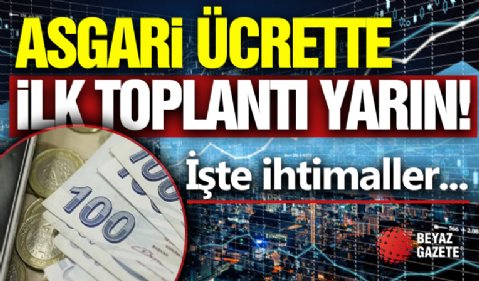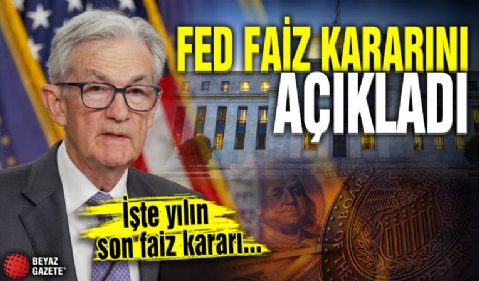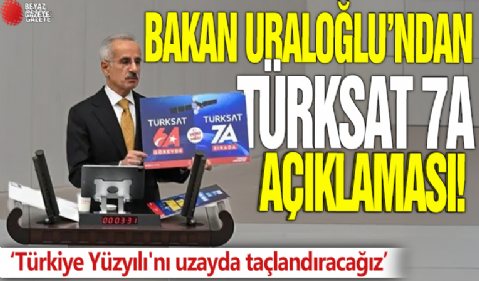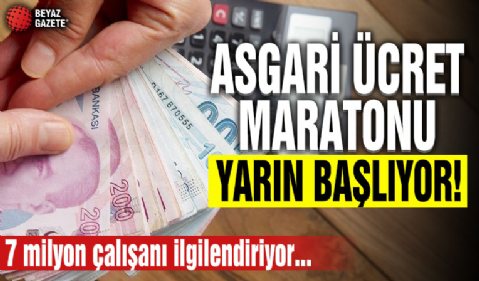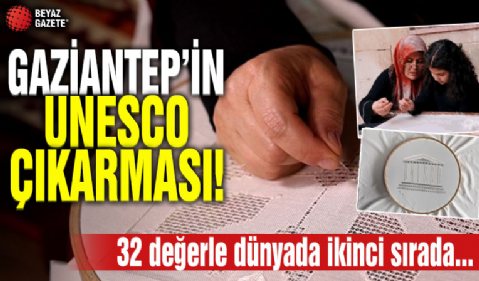Biyografi
22 Temmuz 1898 tarihinde Lawnton, Pennsylvania'da doğdu. Sanatçı bir aileden geldi. 1902 yılında dört yaşındayken, şimdi Metropolitan Museum of Art New York'ta bulunan babasının heykeli için çıplak poz verdi. Aynı yıl içinde, ilk heykel çalışması olan kil fili tamamladı.
Üç yıl sonra ailesi Oracle, Arizona'ya taşındı ve bir yıl için çocukları, arkadaşlarına bıraktı. Çocuklar, ebeveynleri ile 1906 yılının Mart ayında tekrar biraraya geldiler ve Arizona'daki çiftlikte aynı yılın sonbaharına kadar kaldılar. Arizona'dan sonra Calder'ın ailesi Pasadena, Kaliforniya'ya taşındı. 1909 yılında, dördüncü sınıftayken ailesi için Noel hediyesi olarak pirinç levhadan bir bir köpek ve bir ördek heykeli oluştudu.
Sanat kariyeri
Calder, bir artist olmaya karar verince Art Students League of New York'a yerleşti. Öğrenciyken, 1925 yılında National Police Gazette için çalıştı. Burada Ringling BrothersBarnumBailey Circus çizimleri için görev aldı. Daha sonraki çalışmalarında tema olacak olan sirke hayran oldu. 1926 yılında, Calder Paris'e taşındı.
Sırp oyuncak tüccarının önerisiyle, artikülasyon ile oyuncak tasarlamaya başladı. 1927 yılında Birleşik Devletler'e geri döndü. Çocuklar için ahşaptan çekilebilen ve itilebilen oyuncaklar tasarladı ve bunlar, Gould Manufacturing Company tarafından üretildi. 1928 yılında, Calder, ticari bir galeri olan Weyhe Galerisi New York'ta ilk solo fuarını düzenlendi. 1934 yılında ise, ilk solo müze sergisini The Renaissance Society at the University of Chicago'da düzenledi.
Paris'teyken Calder, Joan Miró, Jean Arp ve Marcel Duchamp gibi birçok avant-garde sanatçılarıyla tanıştı. 1930 yılında Piet Mondrian'ın stüdyosuna yaptığı bir ziyaret, onu soyut sanatta şoka uğrattı.
Alexander Calder (July 22, 1898 – November 11, 1976) was an American sculptorartist most famous for inventing the mobile sculptures. In addition to mobilestable sculpture, Alexander Calder also created paintings, lithographs, toys, tapestry, jewelryhousehold objects.
Childhood
Alexander "Sandy" Calder was born in Lawnton, Pennsylvania, on July 22, 1898. His father, Alexander Stirling Calder, was a well-known sculptor who created many public installations, a majority of them in Philadelphia. Calder’s grandfather, sculptor Alexander Milne Calder, was born in Scotlandimmigrated to Philadelphia in 1868. He is best-known for the colossal statue of William Penn on top of Philadelphia's City Hall tower. Calder’s mother, Nanette Lederer Calder, was a professional portrait painter who studied at the Académie Julianthe Sorbonne in Paris from around 1888 until 1893. She then moved to Philadelphiashe met Alexander Stirling Calder while studying at the Pennsylvania Academy of the Fine Arts. Calder’s parents were married on 22 February 1895. His sister, Margaret "Peggy" Calder, was born in 1896. Her married name was Margaret Calder Hayes,she was instrumental in the development of the UC Berkeley Art Museum.[2]
In 1902, Calder posed nude for his father’s sculpture The Man Cub, which is now located in the Metropolitan Museum of Art in New York City. That year, he completed his earliest sculpture, a clay elephant.[3]
Three years later, Stirling Calder contracted tuberculosisCalder’s parents moved to a ranch in Oracle, Arizona, leaving the children in the care of family friends for a year.[4] The children were reunited with their parents in late March 1906stayed at the ranch in Arizona until fall of the same year.[5]
.bmp)
After Arizona, the Calder family moved to Pasadena, California. The windowed cellar of the family home became Calder's first studiohe received his first set of tools. He used scraps of copper wire that he found in the streets to make jewelrybeads for his sister’s dolls. On January 1, 1907, Calder’s mother took him to the Tournament of Roses Parade in Pasadena,he observed a four-horse-chariot race. This style of event later became the finale of Calder’s wire circus shows.[6]
In 1909, when Calder was in the fourth grade, he sculpted a doga duck out of sheet brass as Christmas gifts for his parents. The sculptures were three dimensionalthe duck was kinetic because it rocked when gently tapped. These sculptures are frequently cited as early examples of Calder’s skill.[7]
In 1910, the Calder family moved back to Philadelphia,Alexander briefly attended the Germantown Academy,then to Croton-on-Hudson in New York State.[8] In Croton, during his early high school years, Calder was befriended by painter Everett Shinn with whom he built a gravity powered system of mechanical trains. Calder described We ran the train on wooden rails held by spikes; a chunk of iron racing down the incline speeded the cars. We even lit up some cars with candle lights.[9]
After Croton, the Calders moved to Spuyten Duyvil to be closer to the Tenth Street Studio Building in New York City,Stirling Calder rented a studio. While living in Spuyten Duyvil, Calder attended Yonkers High.
In 1912, Stirling Calder was appointed acting chief of the Department of Sculpture of the Panama Pacific International Exposition in San Francisco.[10] He began work on sculptures for the exposition that was held in 1915. During Alexander Calder’s high school years between 19121915, the Calder family moved backforth between New YorkCalifornia. In each new location Calder’s parents reserved cellar space as a studio for their son. Toward the end of this period, Calder stayed with friends in California while his parents moved back to New York so that he could graduate from Lowell High School in San Francisco. Calder graduated in the class of 1915.
.bmp)
Education
In 1915, Calder decided to study mechanical engineeringenrolled at the Stevens Institute of Technology in Hoboken, New Jersey. He was a member of the Delta Tau Delta fraternityexcelled in mathematics. In the summer of 1916, Calder spent five weeks training at the Plattsburg Civilian Military Training Camp. In 1918, he joined the Student’s Army Training Corps, Naval Section, at Stevenswas made guide of the battalion.
I learned to talk out of the side of my mouthhave never been quite able to correct it since.[11]
Calder received a degree from Stevens in 1919. For the next several years, he held a variety of engineering jobs, including working as a hydraulics engineera draughtsman for the New York Edison Company. In June 1922, Calder found work as a mechanic on the passenger ship H. F. Alexander. While the ship sailed from San Francisco to New York City, Calder worked on deck off the Guatemalan Coastwitnessed both the sun risingthe moon setting on opposite horizons. He described in his autobiography "It was early one morning on a calm sea, off Guatemala, when over my couch — a coil of rope — I saw the beginning of a fiery red sunrise on one sidethe moon lookinga silver coin on the other."[12]
The H.F. Alexander docked in San FranciscoCalder traveled up to Aberdeen, Washington,his sister lived with her husband, Kenneth Hayes. Calder took a job as a timekeeper at a logging camp. The mountain scenery inspired him to write home to request paintsbrushes. Shortly after this, Calder decided to move back to New York to pursue a career as an artist.
Art career
Calder moved to New Yorkenrolled at the Art Students' League. While a student, he worked for the National Police Gazette where, in 1925, one of his assignments was sketching the Ringling BrothersBarnumBailey Circus. Calder became fascinated with the circus, a theme that would reappear in his later work.
In 1926, Calder moved to Parishe established a studio at 22 rue Daguerre in the Montparnasse Quarter. At the suggestion of a Serbian toy merchant, he began to make toys. At the urging of fellow sculptor Jose de Creeft, he submitted them to the Salon des Humoristes. Later that fall, Calder began tohis Cirque Calder, a miniature circus fashioned from wire, string, rubber, cloth,other found objects. Designed to fit into suitcases (it eventually grew to fill five), the circus was portable,allowed Calder to hold performances on both sides of the Atlantic. He gave improvised shows, recreating the performance of a real circus. Soon, his "Cirque Calder"[13] (usually on view at the Whitney Museum of American Art) became popular with the Parisian avant-garde. In 1927, Calder returned to the United States. He designed several kinetic wooden pushpull toys for children, which were mass-produced by the Gould Manufacturing Company, in Oshkosh, WI. His originals, as well as playable replicas, are on display in the Berkshire Museum in Pittsfield, Massachusetts. In 1928, Calder held his first solo show at a commercial gallery at the Weyhe Gallery in New York City. In 1935, he had his first solo museum exhibition in the United States at The Renaissance Society at the University of Chicago. In 1929, Calder had his first solo show of wire sculpture in Paris at Galerie Billiet. The painter Jules Pascin, a friend of Calder's from the cafes of Montparnasse, wrote the preface. In June 1929, while traveling from Paris to New York, Calder met his future wife, Louisa James, grandniece of author Henry Jamesphilosopher William James. They married in 1931. While in Paris, Calder metbecame friends with a number of avant-garde artists, including Joan Miró, Jean Arp,Marcel Duchamp. A visit to Piet Mondrian's studio in 1930 "shocked" him into embracing abstract art.
The Cirque Calder can be seen as the start of Calder's interest in both wire sculpturekinetic art. He maintained a sharp eye with respect to the engineering balance of the sculpturesutilized these to develop the kinetic sculptures Duchamp would ultimately dub as "mobiles", a French pun meaning both "mobile""motive." He designed some of the characters in the circus to perform suspended from a thread. However, it was the mixture of his experiments to develop purely abstract sculpture following his visit with Mondrian that lead to his first truly kinetic sculptures, manipulated by means of crankspulleys.
By the end of 1931, he moved on to more delicate sculptures which derived their motion from the air currents in the room. From this, Calder's "mobiles" were born. At the same time, Calder was also experimenting with self-supporting, static, abstract sculptures, dubbed "stabiles" by Arp in 1932 to differentiate them from mobiles. CalderLouisa returned to America in 1933 to settle in a farmhouse they purchased in Roxbury, Connecticut,they raised a family (first daughter, Sandra born 1935, second daughter, Mary, in 1939). Calder continued to give Cirque Calder performances but also worked with Martha Graham, designing stage sets for her balletscreated a moving stage construction to accompany Eric Satie's Socrate in 1936.
During World War II, Calder attempted tothe Marines as a camofleur, but was rejected. Instead, he continued to sculpt, but a scarcity of metal led to him producing work in carved wood.
Calder's first retrospective was held in 1938 at George Walter Vincent Smith Gallery in Springfield, Massachusetts. In 1943, the Museum of Modern Art hosted a well-received Calder retrospective, curated by James Johnson SweeneyMarcel Duchamp.
.bmp)
Calder was one of 250 sculptors who exhibited in the 3rd Sculpture International held at the Philadelphia Museum of Art in the summer of 1949. His mobile, International Mobile was the centerpiece of the exhibition.
In the 1950s, Calder increasingly concentrated his efforts on producing monumental sculptures. Notable examples are ".125" for JFK Airport in 1957, "La Spirale" for UNESCO in Paris 1958"Man" ("L'Homme"), commissioned for Expo 67 in Montreal. Calder's largest sculpture until that time, 20.5 meters high, was "El Sol Rojo", constructed for the 1968 Summer Olympics in Mexico City.
In 1962, he settled into his new workshop Carroi, a very futuristic designoverlooking the valley of the Lower Chevrière to Saché in Indre-et-Loire (France). He did not hesitate to offer his gouachessmall mobile to his friends in the country, he even donated to the town of a stabile trônant since 1974 in front of the church: an anti-sculpture free from gravity.
He did make the most of its stabilesmobiles at factory Biémont Tours (France), including "the Man", all stainless steel 24 meters tall, commissioned by Canada's International Nickel (Inco) for the Exposition Universelle de Montréal in 1967. All products are made from a model made by Calder, by the research department (headed by M. Porcheron, with Alain Roy, François Lopez, Michel Juigner ...) to design to scale, then by workers qualified boilermakers for manufacturing, Calder overseeing all operations,if necessary amending the work. All stabiles will be manufactured in carbon steel, then painted for a major part in black, except the man who will be raw stainless steel , the mobiles are made of aluminummade of duralumin.
He made most of his monumental sculpture during this time at Etablissements Biémont in Tours, France. Calder woulda model of the work, the research department would scale it to final size, then experienced boilermakers would complete the actual metalwork — all under Calder's watchful eye. Stabiles were made in carbon steel; mobiles were mostly aluminum.
In 1966, Calder published his Autobiography with Pictu"How can art be realized?
Out of volumes, motion, spaces bounded by the great space, the universe.
Out of different masses, tight, heavy, middling—indicated by variations of size or color—directional line—vectors which represent speeds, velocities, accelerations, forces, etc. . . .—these directions making between them meaningful angles,senses, together defining one big conclusion or many.
Spaces, volumes, suggested by the smallest means in contrast to their mass, or even including them, juxtaposed, pierced by vectors, crossed by speeds.
Nothing at all of this is fixed.
Each element able to move, to stir, to oscillate, to comego in its relationships with the other elements in its universe.
It must not be just a fleeting moment but a physical bond between the varying events in life.
Not extractions,
But abstractions
Abstractions that arenothing in life except in their manner of reacting."[18]
- From Abstraction-Création, Art Non Figuratif, no. 1, 1932.
res with the help of his son-in-law, Jean Davidson. In June 1969, Calder attended the dedication of his monumental stabile “La Grande Vitesse” in Grand Rapids, Michigan. This sculpture is notable for being the first public work of art in the United States to be funded with federal monies; acquired with funds granted from the then new National Endowment for the Arts under its “Art for Public Places” program.
Calder created a sculpture called WTC Stabile (also known as Bent Propeller), which in 1971 was installed at the entrance of the World Trade Center's North Tower. When Battery Park City opened, the sculpture was moved to VeseyChurch Streets.[14] It stood in front of 7 World Trade Center when it was destroyed on September 11, 2001.[15]
Calder died on November 11, 1976, shortly after opening a major retrospective show at the Whitney Museum in New York. He had been working on a third plane, entitled Salute to Mexico, when he died.
Calder's paintings
In addition to sculptures, Calder painted throughout his career, beginning in the early 1920s. By 1973, Braniff International Airways commissioned him to paint a full-size DC-8-62 as a "flying canvas." In 1975, Calder completed a second plane, this time a Boeing 727-291, as a tribute to the U.S. Bicentennial. In 1975, he was commissioned by BMW to paint a BMW 3.0 CSL which would come to be the first vehicle in the BMW Art Car Project.
Commemoration
Two months after his death, Calder was posthumously awarded the Presidential Medal of Freedom, the United States' highest civilian honor, by President Gerald Ford. However, representatives of the Calder family boycotted the January 10, 1977 ceremony "to make a statement favoring amnesty for Vietnam War draft resisters".
In 1987, the Calder Foundation was founded by Calder's family. The Foundation "runs its own programs, collaborates on exhibitionspublications,gives advice on matters such as the history, assembly,restoration of works by Calder."[16] The U.S. copyright representative for the Calder Foundation is the Artists Rights Society.[17] Calder's work is in many permanent collections across the world.
.bmp)
Quotes
"How can art be realized?
Out of volumes, motion, spaces bounded by the great space, the universe.
Out of different masses, tight, heavy, middling—indicated by variations of size or color—directional line—vectors which represent speeds, velocities, accelerations, forces, etc. . . .—these directions making between them meaningful angles,senses, together defining one big conclusion or many.
Spaces, volumes, suggested by the smallest means in contrast to their mass, or even including them, juxtaposed, pierced by vectors, crossed by speeds.
Nothing at all of this is fixed.
Each element able to move, to stir, to oscillate, to comego in its relationships with the other elements in its universe.
It must not be just a fleeting moment but a physical bond between the varying events in life.
Not extractions,
But abstractions
Abstractions that arenothing in life except in their manner of reacting."[18]
- From Abstraction-Création, Art Non Figuratif, no. 1, 1932.




